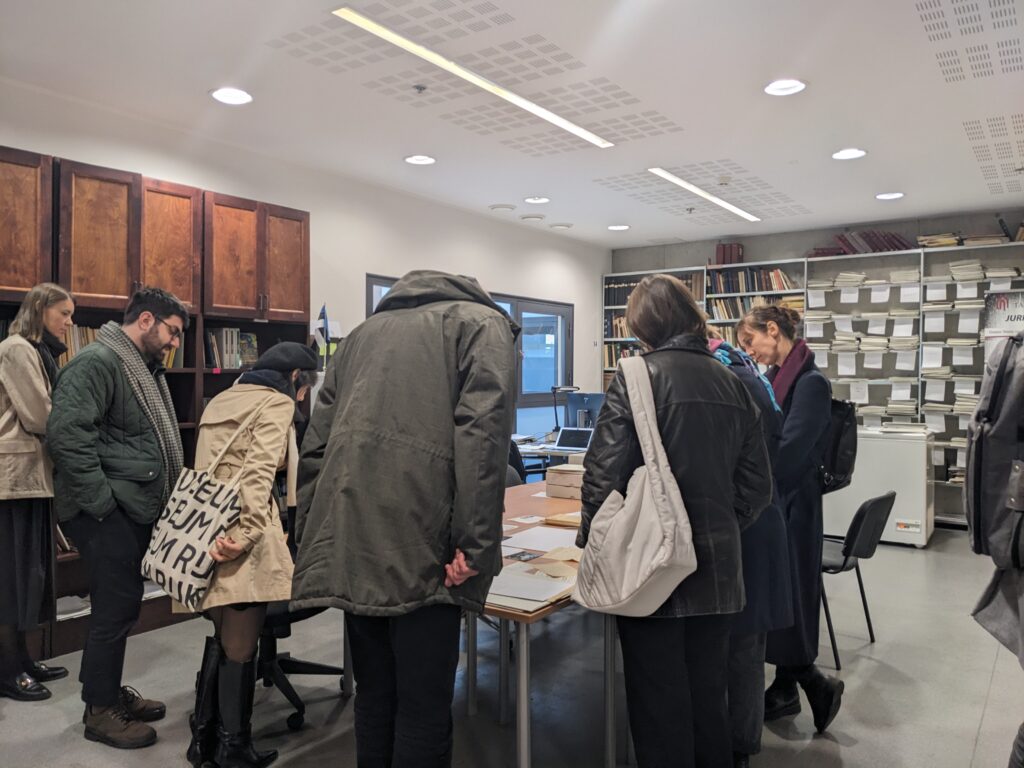 News
News
DIGHT-Net Workshop Report: Innovative Approaches Between Semiotics and Memory Studies, 13 October 2024
October 30, 2024

Closing off the first sequence of DIGHT-Net events hosted at Tallinn University, was the workshop organised by the University of Bologna on innovative approaches to digital cultural heritage, bridging the fields of semiotics and memory studies. During this workshop, experts in the fields of semiotics and memory studies explored the intersections of these fields with archives, audiovisual materials, and the dynamics of remembering and forgetting.
After the workshop was opened by Prof. Francesco Mazzucchelli (UNIBO), the first lecture was delivered by Dr. Matteo Treleani (Université Côte d’Azur). Tying together issues of materiality and preservation, Matteo discussed digital cultural heritage as transmissible content, in terms of digital transmission and as a value system transmitted over generations. In relation to audiovisual heritage, this transmission takes on the form of remediation, or re-use. Through a genealogical approach towards visual emblems, Matteo exemplified how the industrial use of media complicates the reliability and authenticity of widespread images and thus possibly problematises the formation of visual memory.
Continuing the programme, Prof. Marek Tamm (TLU) discussed the workings of digital cultural memory. Through the evolution of its theoretical underpinnings, as well as the practical effects of the digital condition on remembering, Marek highlighted how to study this digitally mediated relationship with the past. Thereafter, Prof. Claudio Paolucci (UNIBO) presented his ideas on the digital archive and the list. As the immediacy of the digital space risks the collapsing of the value system of recorded heritage, the list acquires increasing primacy in making sense of a ‘post-scarcity’ world.
In the afternoon, Prof. Anna Maria Lorusso (UNIBO) reflected on the dichotomy of the right to be forgotten and the permanency of digital traces. Relating this issue to the semiotics of memory, she raised important questions on who decides what should be forgotten, and what forgetting might even mean in a digital age. Continuing this semiotic approach, Dr. Maarja Ojamaa (University of Tartu) discussed semiotic accessibilities. In relation to the digital archive, she offered vital considerations on how to facilitate dialogical processes through which semiotic resources become meaningful and stable, such as ensuring relevant metadata but preventing this from affecting the object’s integrity.
Thereafter, Dr. Paolo Martinelli presented on the remediation of public archives in an age of worldwide digitalisation. Besides his considerations on the nature of digital documents, he commented on the problematic relationship of semiotics and digital cultural heritage in terms of the durability of media involved and the proliferation of similar or redundant materials. Closing the second DIGHT-Net workshop, Prof. Francesco Mazzucchelli digressed on the transformation of the semiotic structure of archives during digitisation. Relating his discussion to Lotman and Eco’s archives and theories, Francesco highlighted the opportunity to develop a semantic structure of the twinned archives that goes beyond their current functions and knowledge systems. After this thought-provoking presentation, the workshop was closed.
After several days of stimulating discussions, we look forward to continuing these conversations in January 2025 during the DIGHT-Net Workshop on New Trends in Heritage and Archival Studies, hosted at the University of Amsterdam.
Marjolein Uittenbogaard
